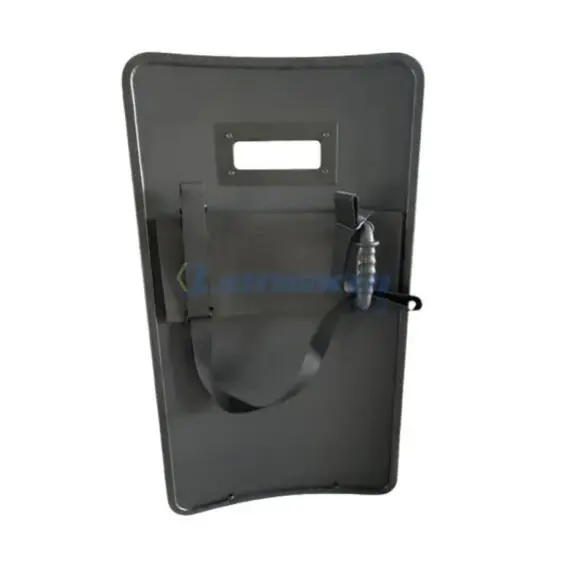The use of shields in grassroots police work
The shield is the most classic defensive weapon with a history of thousands of years. It still plays an important role in modern military and police forces and has derived a shield culture. For example, our armbands are usually shield-shaped, and there are shield patterns on the police badge, which implies the sacred duty of the people's police to protect the people.
There are various types of modern police shields. From a functional point of view, there are both heavy bulletproof shields and lightweight riot shields. From the shape point of view, there are rectangular shields, square shields, round shields, and special-shaped shields such as "cat shields" and "French shields".
From the perspective of holding, there are two-handed shields and one-handed shields.
Of course, shields with different functions and shapes also have different application scenarios. In grassroots law enforcement, we most often use riot shields. The most common material is PC plastic (polycarbonate): transparent, easy to observe; hard, anti-slashing and anti-smashing, and also has a certain flame retardancy. During the "Amendment Storm" in Hong Kong in 2019, the Speed Dragon Squad also carried PC plastic shields to stop violence and chaos.
In the "smallest combat unit", the riot shield occupies a core position.
When facing knife-wielding criminals, the shield is often one of the most useful weapons. It plays an important role in resisting impact and protecting the police. If used properly, it can also have a very good attack effect. It can be said to be the "first of a hundred weapons" for modern police. We mainly talk about the use of two different types of shields.
One is a small shield, which is mainly used for individual protection. The more common one is a small round shield, there are also square ones, and of course there are arm shields. The biggest advantage of a small riot shield is that it is light and convenient. It can be carried with patrol officers and has a very good effect in a small space. It is mainly used with a short baton (combination of attack and defense), and can also be used with other weapons. Common techniques include blocking and slashing, blocking and stabbing, etc.

The small shield can also play a role in the smallest combat unit. It is held by comrades holding short batons to protect their own safety when harassing or attacking.
The second is a large shield, which is mainly used for squad protection. There are traditional rectangular shields and French shields that have become more popular in recent years. It can be used with one hand or two hands (French shields are usually It is a two-handed shield), but since large shields are generally heavier, it is recommended to hold it with both hands. It is located in the core and front position in the team combat, and has two functions. One is to resist the opponent's attack and protect the whole team from harm. The second is to use collision, cutting and other techniques to counterattack and provide an opportunity for teammates to deal with it at the right time.
When using a large shield, you need to pay special attention to three points. First, retract your arms as much as possible, so that the shield is close to the body, and let the whole body take on the attack force transmitted by the shield, so that it can be more stable when attacked; don't hold the shield away from the body because of fear. This holding posture puts all the pressure on the arms, and it is easy for people to knock the shield off.
This action also has another effect, that is, when using collision and counterattack techniques, the arms can burst forward directly, while holding with both arms straight is not only unstable, but also cannot leave space for collision action, and can only push forward, and pushing forward is often useless.
Second, you need to bend your back forward, stand firmly with your legs separated front and back, and try to block your head and face behind the shield. At the same time, the forward movement can also enhance our stability when facing attacks. .
Third, you need to practice the movements frequently (pair practice), adapt to the feeling of being attacked, reduce the psychological pressure in the battle state, and test the reliability of the ballistic shield at the same time.

Comments
0